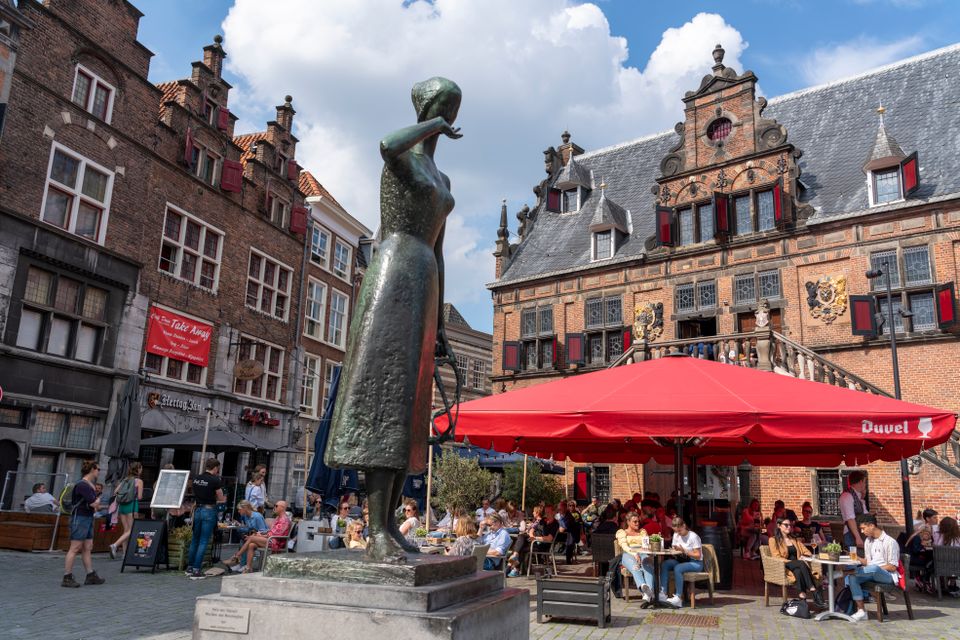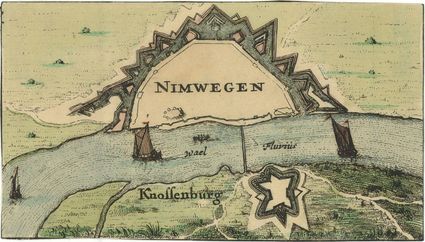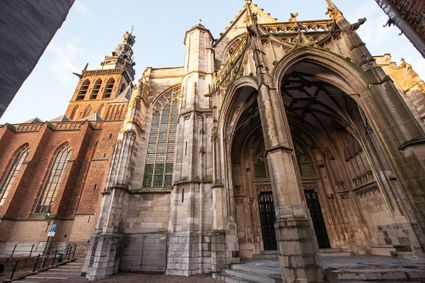Mariken van Nieumeghen – a play character as a citywide icon
Nijmegen is bursting at the seams with historical stories, ranging from leading figures to ordinary people, from neighbourhoods to political events. The Canon of Nijmegen encompasses the most important stories about Nijmegen’s history. One of these stories tells the tale of the most famous girl from Nijmegen: Mariken van Nieumeghen. But who was she?
Mariken van Nieumeghen is the protagonist of a miracle play, which was written by an unknown author in Antwerp around 1500 A.D. Mariken has never existed yet she is an integral part of Nijmegen’s history.
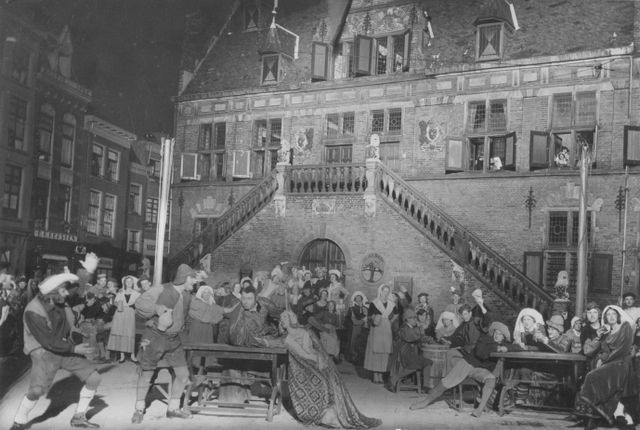 A performance of Mariken van Nieumeghen in front of the weighing house in 1935
A performance of Mariken van Nieumeghen in front of the weighing house in 1935
The author of the play must have been familiar with Nijmegen, but probably never lived there. They were also familiar with the history of the Duchy of Gelre, because they set the stage for the play in the time when Duke Adolf had deposed his father Arnhold and locked him away in the castle of Buren, which happened in 1465-1472. It's unclear why the author embedded their story in the history of Gelderland. However, the way Adolf had treated his father was a well-known tale which had sparked indignation far and wide.
1500: the story of Mariken
The play tells the story of a young woman, Mariken, who lives with her uncle, a priest named Ghijsbrecht, in a village outside Nijmegen, where she works in the household. One day, her uncle sends her to the city to go shopping. Her shopping list is a familiar one: candles, lamp oil, vinegar, salt, onions, and sulphur sticks. She sets off for Nijmegen, carrying the list and eight nickels with her. At the end of the day, she knocks at her aunt’s door, because she wants to stay in Nijmegen for the night, but her aunt sends her away. Mariken wanders through the streets until she is approached by a man called Moenen. She joins him and they leave Nijmegen together, ignorant to the fact that Moenen is the devil in disguise.
Mariken leads a sinful life with Moenen for seven years. One day, when she returns to Nijmegen, she witnesses an edifying play on the Grote Markt, after which she repents and tries to withdraw from Moenen’s influence. She succeeds, partly because of the help of her uncle Ghijsbrecht. In order to gain forgiveness for her sins, Mariken must travel to the Archbishop of Cologne and the Pope of Rome. She has to wear three heavy iron rings around her neck and arms as part of this penance. After her journey, she enters a convent in Maastricht, where an angel releases her from the rings 24 years later, because God has forgiven her sins. Two years later, she dies in the convent.
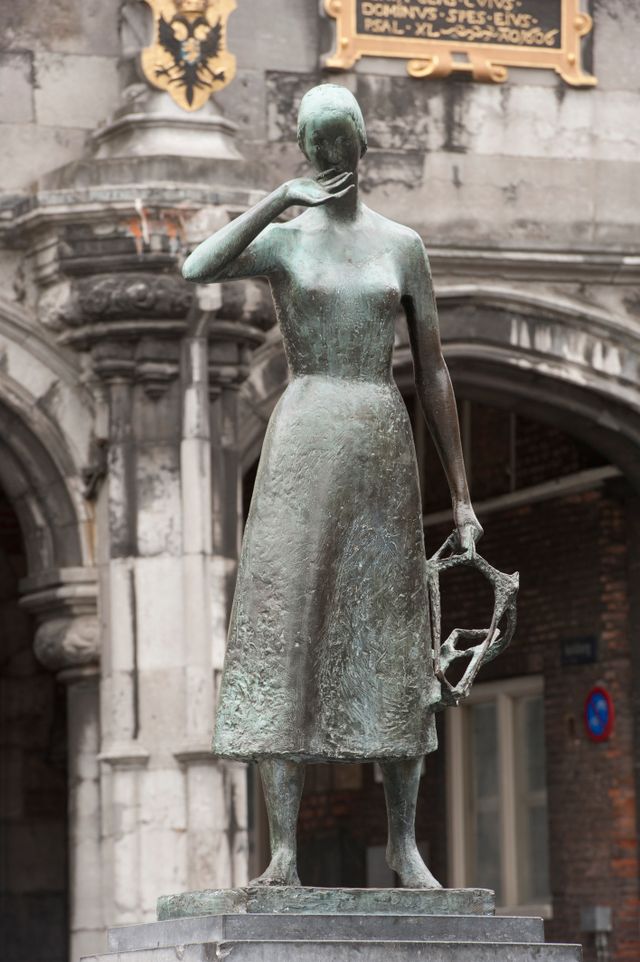 A statue of Mariken on the Grote Markt
A statue of Mariken on the Grote Markt
1957: a statue on the Grote Markt
In the years since the play was published, Mariken has become a female icon of Nijmegen. In 1957, a statue of her was placed on the Grote Markt, made by artist Vera Tummers-van Hasselt. An original delicacy from Nijmegen, created in 1990, was named Marikenbrood. A time later, a new shopping street in the city centre was named Marikenstraat, and Mariken’s devilish lover was honoured with the Moenenstraat, the shopping street between Arsenaal and Ziekerstraat. The annual running event for women in Nijmegen was named Marikenloop – not to mention, all the girls from Nijmegen whose parents named them Mariken.
Immerse yourself in the rich history of the oldest city in the Netherlands, because Nijmegen has a lot of stories to tell you. Curious? You can read all about it in this historical timeline.
